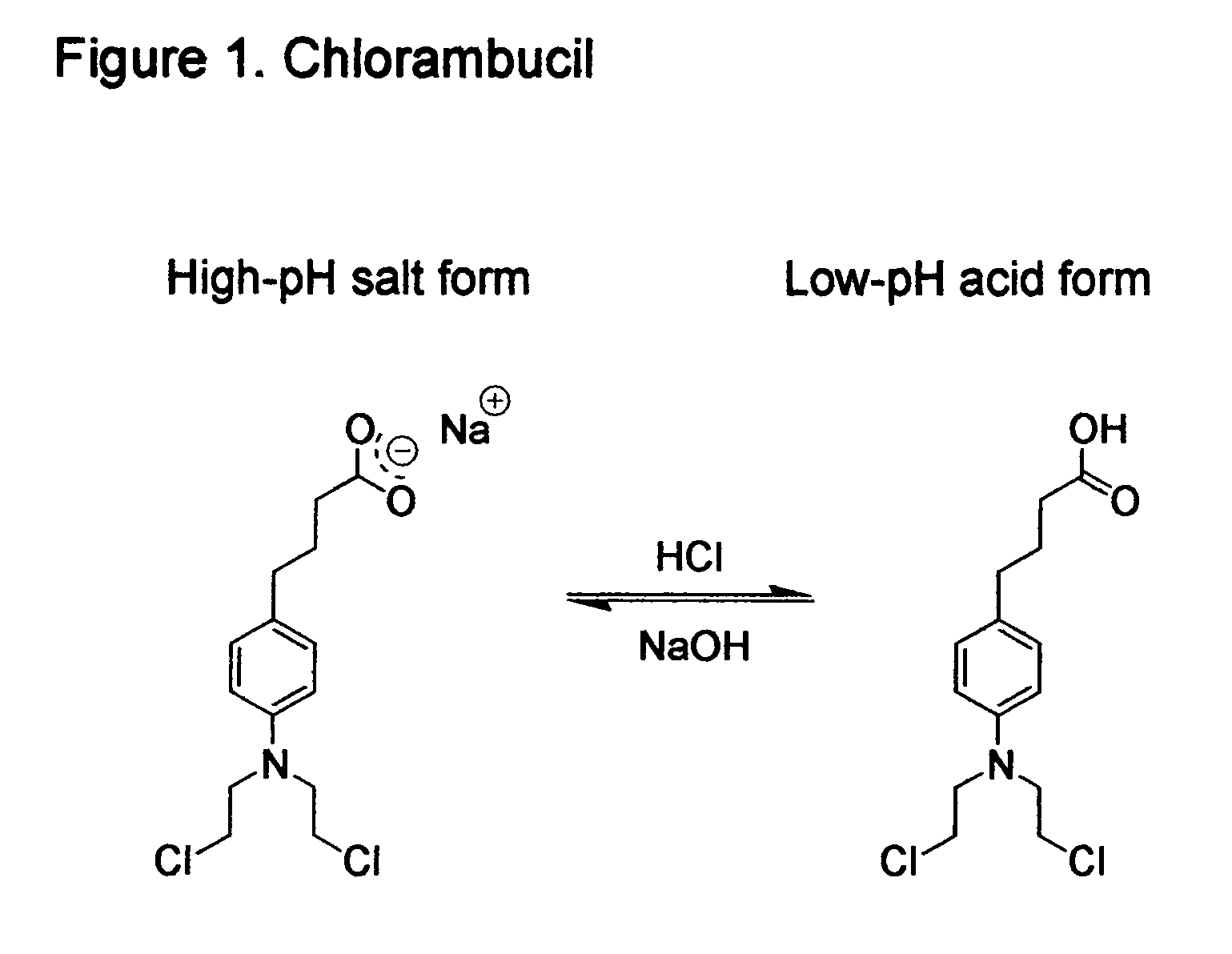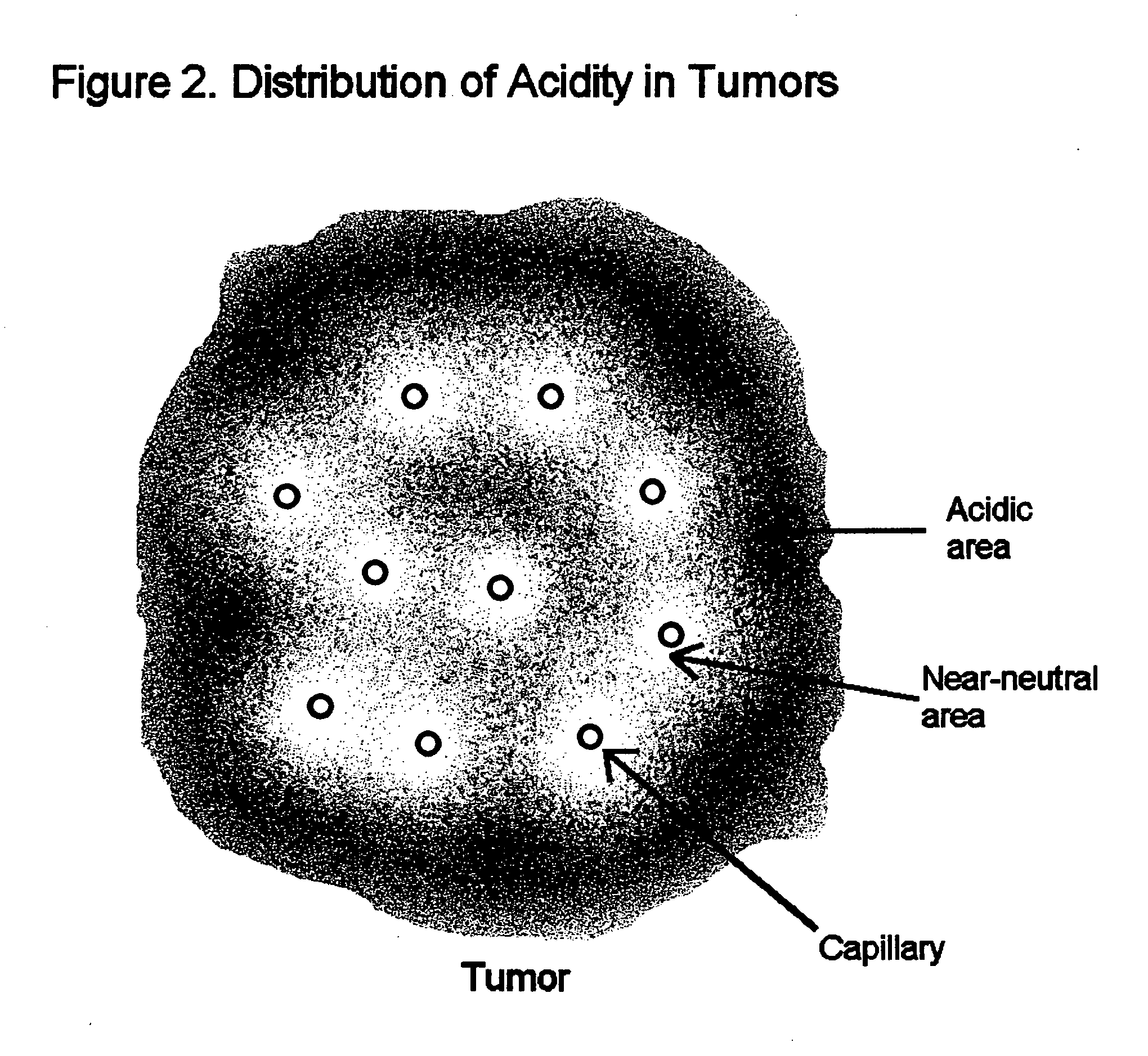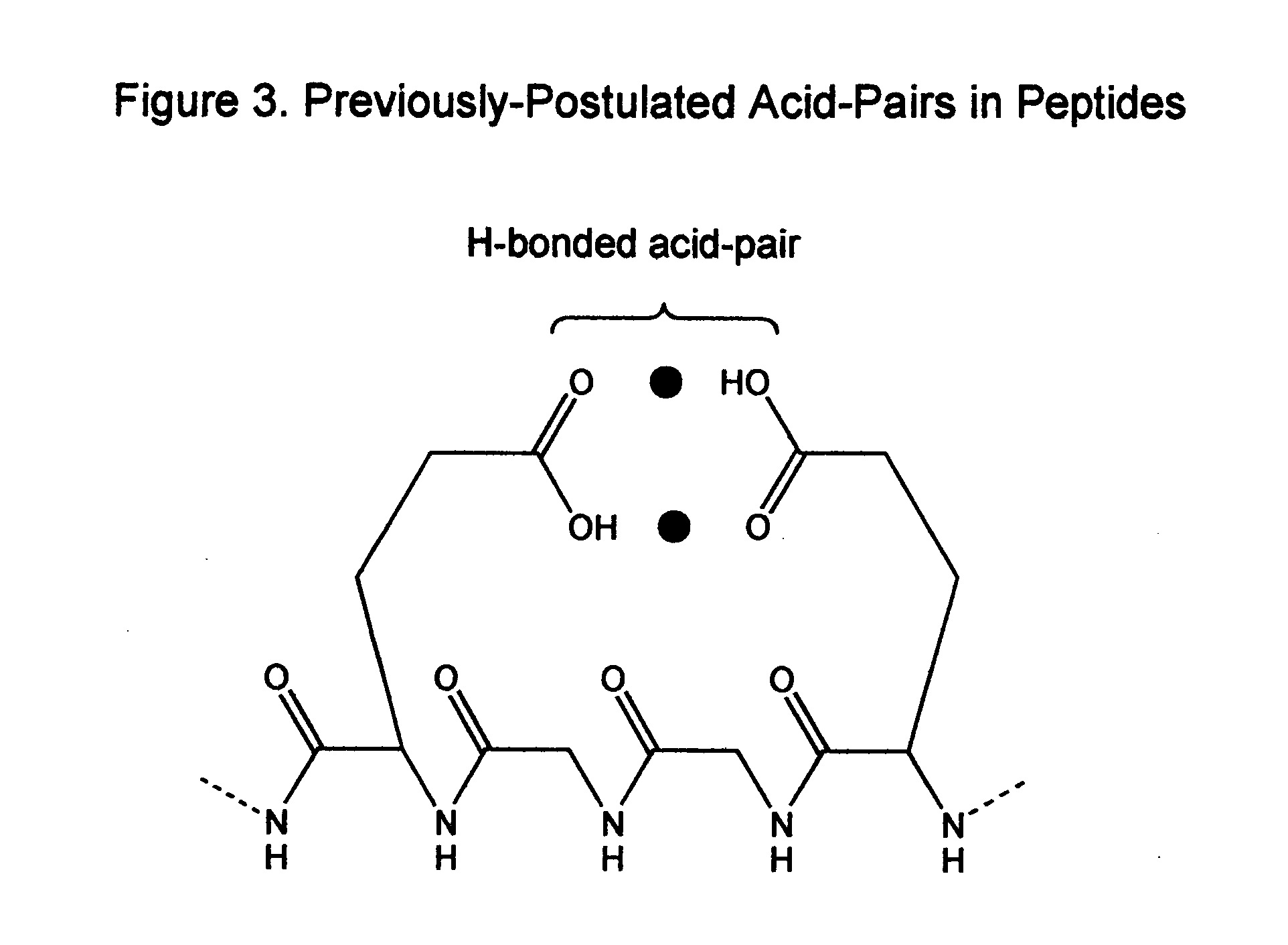Compositions and methods for detecting and treating tumors containing acidic areas
a tumor and acidic area technology, applied in the field of tumors containing acidic areas, can solve the problems of abnormal blood vessels, excessive permeation of walls, and ineffective conventional cancer therapies against quiescent tumor cells slow-dividing and non-dividing, and achieves the effects of increasing the sequestration of peptide oncotools, reducing the number of tumors, and increasing the sequestration ra
- Summary
- Abstract
- Description
- Claims
- Application Information
AI Technical Summary
Benefits of technology
Problems solved by technology
Method used
Image
Examples
example 1
[0348]The sodium salts of propionic acid and octanoic acid in water were titrated with 5 M HCl. The mid-point of the transition between salt and acid (pKa value) was found to be an expected 4.83 for propionic acid, but a surprisingly-high 5.5 for octanoic acid. The first derivative of the titration curve was symmetrical for the propionic acid, but highly unsymmetrical for the octanoic acid. In addition, droplets of octanoic acid came out of solution during the course of the octanoic titration.
[0349]In contrast, when the salts of these same two acids were titrated in methanol / water, 1:1 by vol., their mid-points of transition were virtually identical and the first derivative of their titration curves were now both symmetrical. Finally, in the titration in methanol / water no octanoic acid came out of solution.
[0350]These results suggest that the surprisingly high mid-point in the titration seen for octanoic acid in aqueous solution was due simply to the insolubility effects illustrated...
example 2
[0351]The compound in FIG. 12a was prepared by reacting camphoric anhydride with dimethylamine. The compound in FIG. 12b was prepared by reacting camphoric anhydride with ethylamine. The sodium salts of compounds shown in FIG. 12a (designed to form an internal acid-specific H-bond) and 12b (designed to form non-acid-specific H-bonds) were titrated in aqueous solution. The first derivative of the titration curve for the compound in FIG. 12b was symmetrical and showed an expected pKa value of 4.82, and there was no apparent insoluble material generated during the titration. In sharp contrast, the first derivative of the titration curve for the compound in FIG. 12a was highly skewed and showed a minimum at the surprisingly high value of 5.8, with the approximate mid-point of the titration at pH 5.6. Further, there was massive precipitate formed with each addition of HCl, starting when the pH reached 5.8.
[0352]These dramatic differences for nearly identical compounds suggest that the st...
example 3
[0353]Titration of the 5-membered ring structure of FIG. 13a (prepared as in Example 2) and the acyclic structure of FIG. 13b (prepared by reacting the anhydride with dimethylamine) showed an expected pKa value of 4.95 for the acyclic structure, but an unexpectedly-high value of 5.6 for the 5-membered ring structure in FIG. 12a—accompanied by massive precipitation when the pH got below about 5.8, as well as skewing of the shape of the titration curve.
[0354]When these two compounds were titrated in methanol / water, 1:1 by vol, there was no sign of insolubility and the first derivative plots of the titration curves were now symmetrical. For the acyclic compound shown in FIG. 13b the pH at the mid-point of the titration was 5.8, while the pH at the mid-point of the titration was a substantially higher 6.45 for the structure in FIG. 13a.
[0355]Thus, even in the absence of skewing of the titration curve due to precipitation of the lipophilic acid form, one sees a substantial 0.65 pH unit ...
PUM
| Property | Measurement | Unit |
|---|---|---|
| pH | aaaaa | aaaaa |
| pH | aaaaa | aaaaa |
| diameter | aaaaa | aaaaa |
Abstract
Description
Claims
Application Information
 Login to View More
Login to View More - R&D
- Intellectual Property
- Life Sciences
- Materials
- Tech Scout
- Unparalleled Data Quality
- Higher Quality Content
- 60% Fewer Hallucinations
Browse by: Latest US Patents, China's latest patents, Technical Efficacy Thesaurus, Application Domain, Technology Topic, Popular Technical Reports.
© 2025 PatSnap. All rights reserved.Legal|Privacy policy|Modern Slavery Act Transparency Statement|Sitemap|About US| Contact US: help@patsnap.com



